If you’ve ever watched deer nibbling on your carefully tended garden, you know the frustration of trying to protect your plants from these graceful yet destructive creatures. Fortunately, nature offers a solution: certain plants and flowers are naturally unappealing to deer, thanks to their strong scents, bitter tastes, or tough textures.
In this article, we’ll introduce you to 36 of the best deer repellent plants and flowers that can help you maintain a flourishing garden. From vibrant blooms to aromatic herbs, these selections not only add beauty to your landscape but also serve as effective barriers against deer.
Discover how you can cultivate a garden that remains lush and inviting, while keeping these herbivorous visitors at bay!
Different Types of Deer Repellent Plants and Flowers
Daffodil
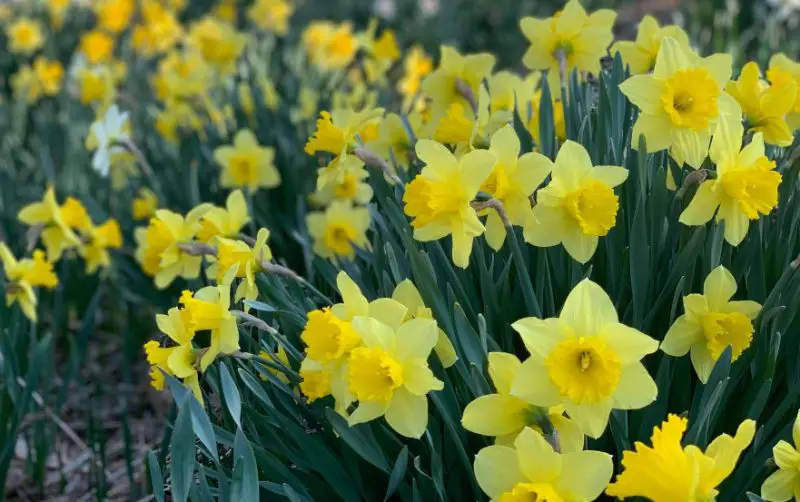
Daffodils (Narcissus jonquilla) are beautiful spring bulbs featuring white flowers with yellow centers, surrounded by long green leaves that thrive in sunlight. Unlike tulips, daffodils are not favored by deer, squirrels, or rabbits due to their milky sap. They bloom in early, mid-, or late spring and have the advantage of multiplying each year, making them a lasting addition to gardens.
With exciting new double varieties and colors ranging from pink to salmon, daffodils are a top choice for deer-resistant bulbs. They grow well in USDA Hardiness Zones 3-8, preferring full sun or partial shade and moist but well-drained soil. However, they are toxic to humans and pets.
Lavender
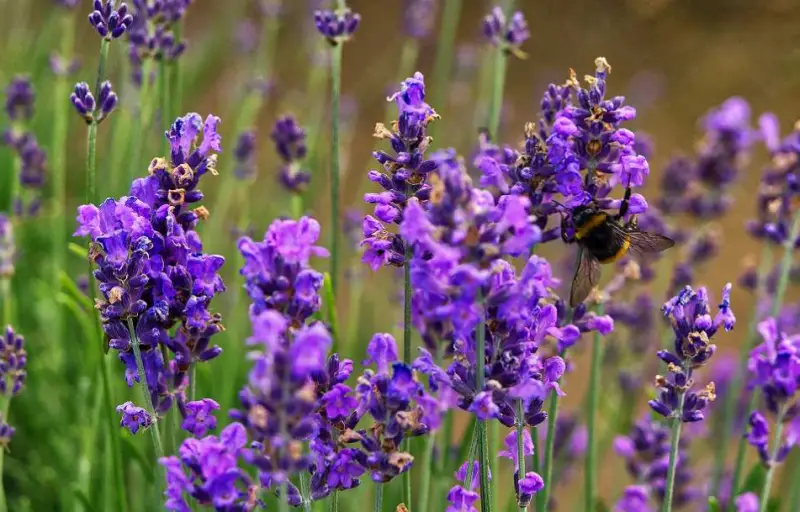
Lavender (Lavandula spp.) is a fragrant plant known for its small purple flowers that cluster at the ends of thin stems, often attracting bees. The sweet scent of lavender is favored by potpourri makers but disliked by deer, making it an excellent choice for deer-deterring hedges in warmer climates. However, lavender may struggle in cooler temperatures and is not a long-lived perennial.
It thrives in USDA Hardiness Zones 5-9, preferring full sun and sandy, well-drained soil. Lavender blooms in various colors, including purple, violet-blue, rose, pale pink, and white, and is toxic to pets.
Lungwort
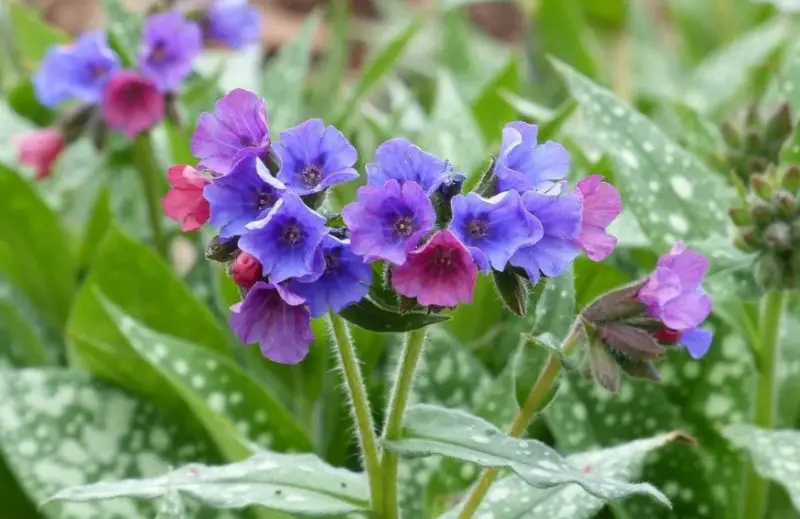
Lungwort (Pulmonaria spp.) is a charming shade plant known for its white-freckled leaves and small pink and purple funnel-shaped flowers. Its attractive foliage makes it a standout in any shaded garden. These low-maintenance plants not only repel deer but also thrive in the dense shade of walnut trees without suffering from juglone toxicity, which affects other shade-loving plants like azaleas.
Lungwort is among the earliest blooming flowers in spring, with varieties like ‘Raspberry Splash’ known for their resistance to powdery mildew. They flourish in USDA Hardiness Zones 4-8, preferring rich, moist but well-drained soil and shade or partial shade.
Yarrow
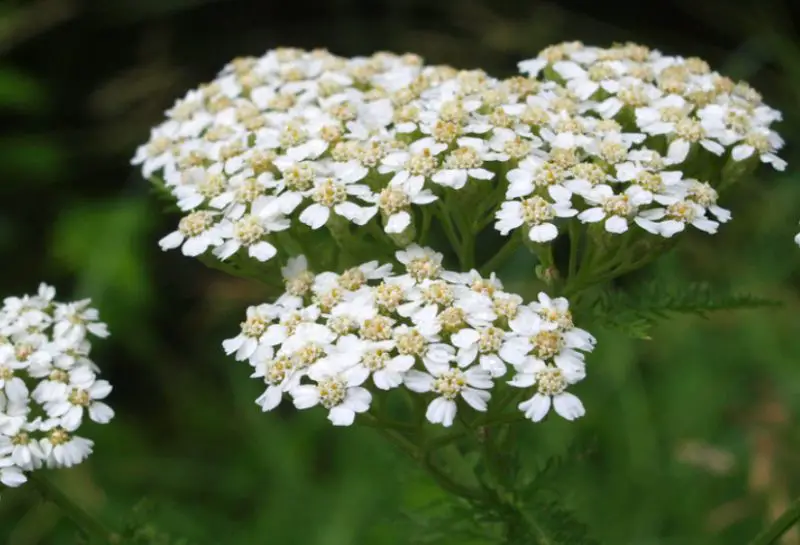
Yarrow (Achillea millefolium) is a tall, long-blooming perennial characterized by its feathery foliage and vibrant clusters of flowers that attract butterflies. This resilient plant blooms from summer into fall and is drought-tolerant, making it a popular choice for low-moisture xeriscape gardens. However, it can be considered an aggressive weed in some regions of the U.S.
Yarrow thrives in USDA Hardiness Zones 3-9, preferring full sun and well-drained soil. Its flowers come in a variety of colors, including purple, white, yellow, pink, orange, red, and bicolored, but the plant is toxic to humans and pets.
Poppy
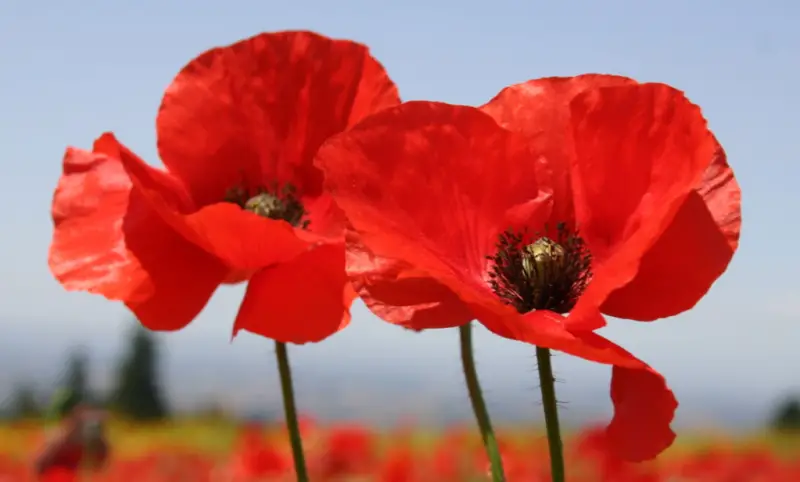
Poppy (Papaver spp.) is a stunning plant known for its delicate tissue paper-like flowers, including varieties with white flowers tipped in light pink, surrounded by thin, drooping stems. In addition to the common annual poppy (Papaver rhoeas), there are numerous perennial species, such as oriental poppies, that bloom in early summer.
Despite their fragile appearance, poppies are not appealing to deer, making them a great choice for gardens. Many poppies also produce ornamental seed pods that remain attractive for weeks after blooming. They thrive in USDA Hardiness Zones 3-9, prefer full sun, and require well-drained soil. However, poppies are toxic to humans and pets.
Annual Vinca
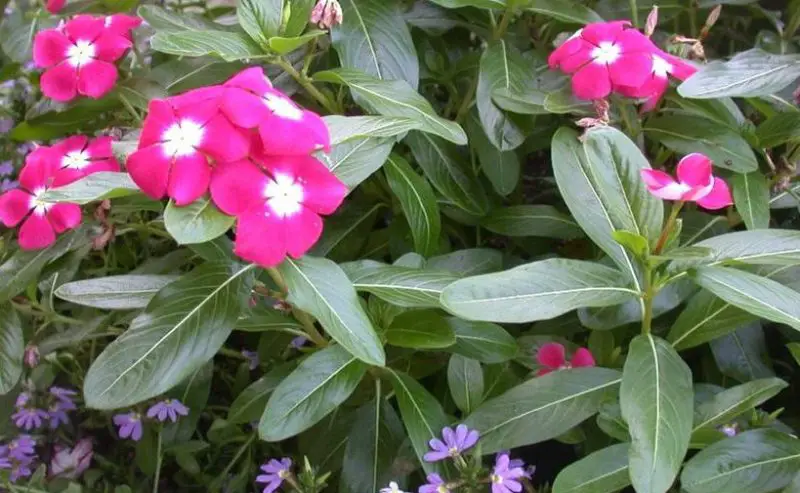
Annual Vinca (Catharanthus roseus), also known as Madagascar periwinkle, is a resilient annual plant that produces vibrant purple flowers surrounded by dark green, leathery leaves. It blooms from late spring until frost, making it a reliable choice for various garden applications, including bedding plants, container gardens, and decorative edging.
This hardy plant is resistant to deer, rabbits, and drought, thriving even in challenging conditions. While it has a long blooming period, flowering tends to be more prolific in hot weather. Annual vinca grows well in USDA Hardiness Zones 4-9, preferring full sun or partial shade and well-drained soil. However, it is toxic to humans and pets.
Winter Aconite
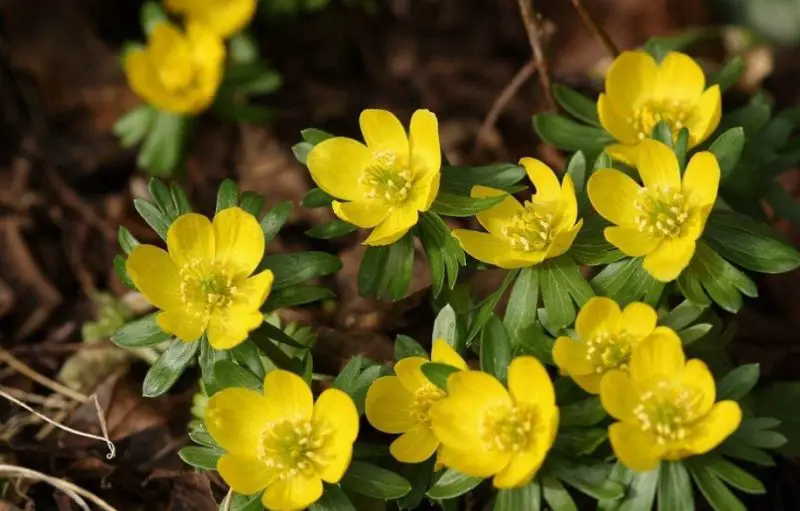
Winter Aconite (Eranthis hyemalis) is a charming perennial known for its bright yellow flowers that emerge in mid- to late winter, often pushing through the snow. These early bloomers are ideal for planting along paths and in open woodland areas, as deer tend to avoid them. They thrive under deciduous trees, where they enjoy sunny conditions in winter but shade in the summer months.
With regular irrigation, winter aconite can create an ever-expanding naturalized patch of vibrant blooms. This plant grows well in USDA Hardiness Zones 3-7, preferring rich, moist but well-drained soil. However, it is toxic to humans and pets.
Bleeding Heart
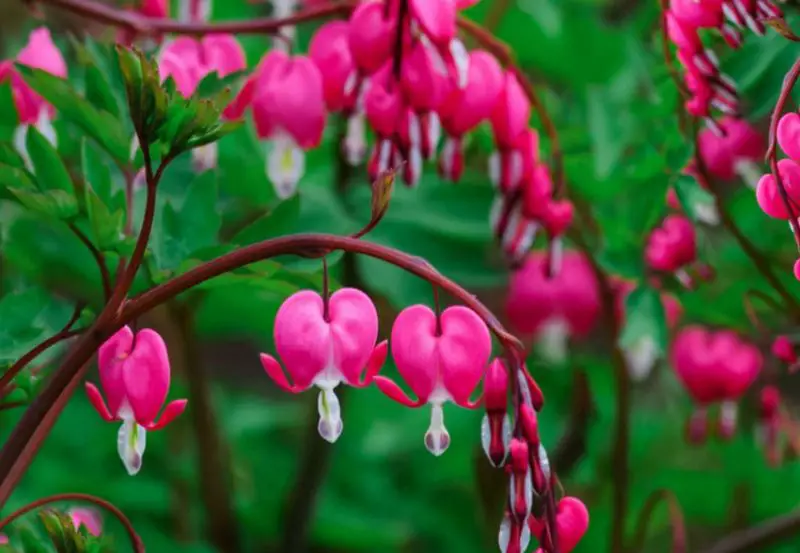
The Bleeding Heart (Lamprocapnos spectabilis) is a shade-loving plant known for its delicate, fern-like foliage and unique heart-shaped flowers in pink, red, or white. These woodland plants bloom in cool weather from late spring to early summer, then go dormant as the summer heat intensifies.
Despite its attractive appearance, deer typically avoid it. The plant thrives in rich, moist, well-drained soil and grows in USDA Hardiness Zones 3-9. However, it is toxic to humans and pets.
Coneflower

Coneflowers (Echinacea spp.) are versatile, long-blooming plants that attract butterflies, support bees, and provide food for wild birds. These hardy perennials thrive in full sun or partial shade and bloom from midsummer to early fall.
Known for their ability to tolerate heat and drought, coneflowers are easy to grow in rich, well-drained soil. With a variety of colors and forms available, they are a favorite in gardens. USDA Hardiness Zones for coneflowers are 3-9, with flowers in shades of purple, pink, red, and more.
Corydalis
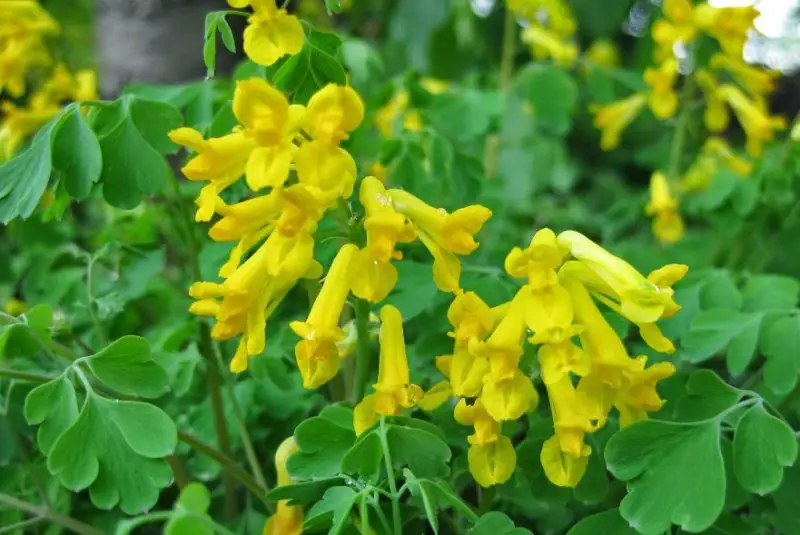
Corydalis (Corydalis spp.) is a charming perennial plant celebrated for its striking fern-like foliage and elongated, tube-like flowers that bloom from late spring to early summer. Gardeners in cooler summer climates often enjoy the best success with the yellow or blue varieties.
This plant can be somewhat aggressive in self-seeding, thriving in suitable conditions. Corydalis grows well in USDA Hardiness Zones 5-7, preferring partial sun or shade, and flourishes in rich, moist but well-drained soil, producing blue or yellow flowers.
Coreopsis
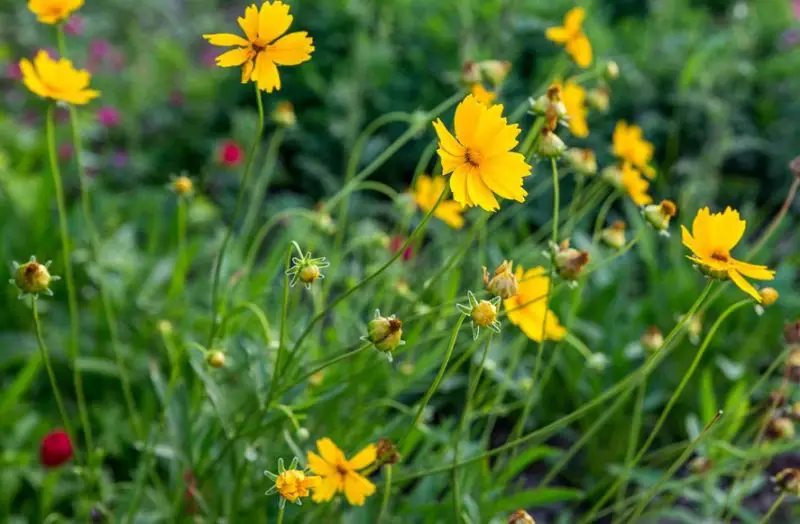
Coreopsis (Coreopsis spp.), commonly known as tickseed, features vibrant yellow petals clustered along sturdy stems, making them a popular choice for sunny gardens. These hardy plants are rarely browsed by deer and are easy to cultivate due to their drought tolerance and minimal fertilization needs.
They bloom from late spring through late summer, sometimes extending into fall. To promote continuous flowering, deadheading spent blooms is recommended. Coreopsis thrives in USDA Hardiness Zones 4-9, preferring full sun or partial shade and well-drained sandy soil, with flowers available in yellow, orange, pink, red, and maroon.
Astilbe
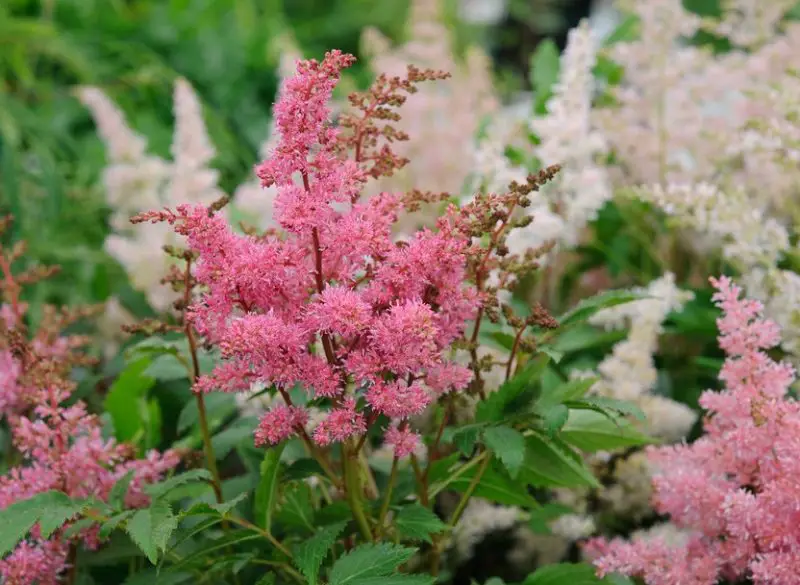
Astilbe (Astilbe spp.) is a stunning clumping perennial from the Saxifragaceae family that thrives in moist, shady environments. This plant features tall, upright stems that can reach up to three feet, adorned with delicate fern-like foliage that may struggle in bright sunlight. Astilbe blooms from late spring to late summer, showcasing plume-like flowers in shades of pink, red, purple, or white, ranging from six inches to two feet long.
While it attracts butterflies to the garden, it remains resistant to browsing by deer and rabbits. Astilbe is suitable for USDA Hardiness Zones 3-8, preferring loamy, moist soil and full sun to partial shade.
Liatris (Blazing Star)
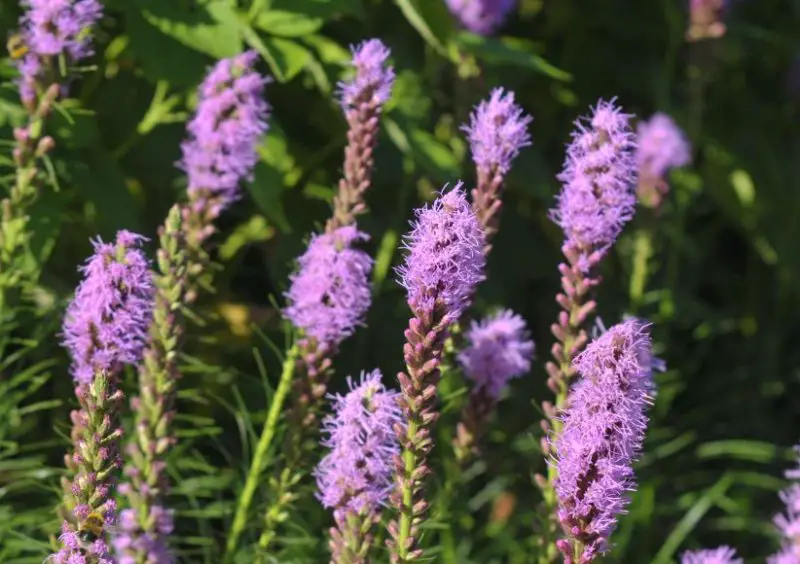
Liatris (Liatris spicata), commonly known as Blazing Star, is a sun-loving herbaceous perennial that showcases unique, tiny star-like blossoms atop long spikes from midsummer to late fall. This native wildflower of the United States typically blooms from July to late fall, with the primary species exhibiting vibrant purple flowers, though pink and white cultivars are also available.
Liatris attracts a variety of pollinators, including birds, bees, and butterflies, while deer tend to avoid it. It thrives in USDA Hardiness Zones 3-9, preferring full sun and moist but well-drained soil.
May Night Salvia
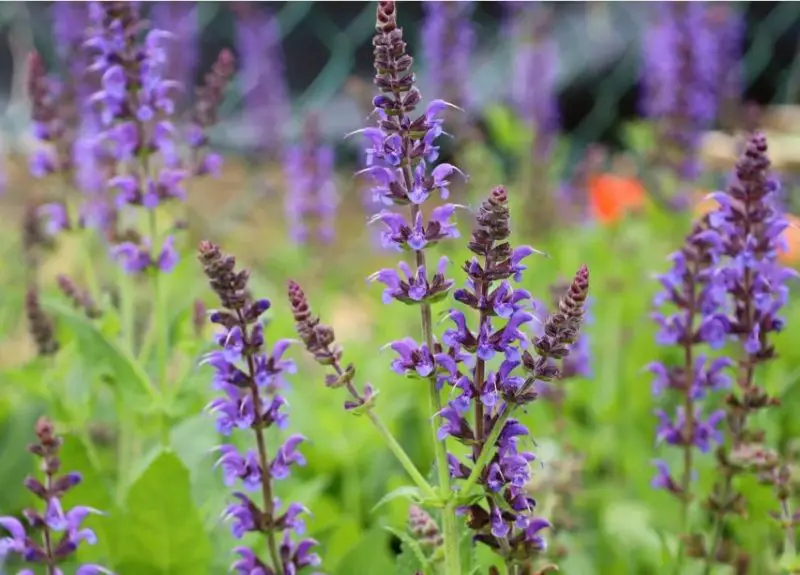
May Night Salvia (Salvia sylvestris ‘May Night’) is a fast-growing perennial cultivar of woodland sage, characterized by its upright growth and small yet vibrant purple-blue flowers that bloom on spikes reaching up to two feet tall. The plant features lance-shaped leaves, which have culinary uses but are not favored by deer due to their fragrant scent.
To maintain its striking flower color, cooler daytime and nighttime temperatures are ideal. When deadheaded, May Night Salvia blooms continuously from May through the entire summer. It thrives in USDA Hardiness Zones 4-8, preferring full sun and well-drained soil.
Shasta Daisy
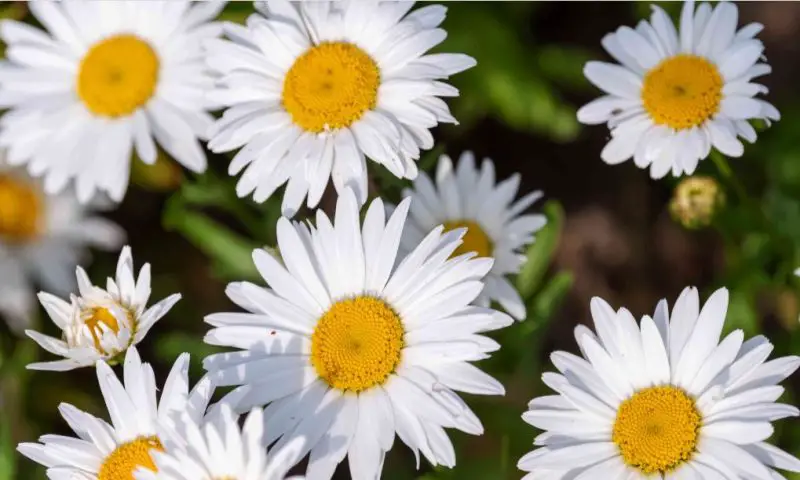
Shasta Daisy (Leucanthemum x superbum) is a bright and cheerful flower known for its radiating white petals and sunny yellow centers, complemented by deep green foliage. These delightful blooms attract pollinators while typically being overlooked by deer. Once established, Shasta daisies are vigorous growers that spread easily. They thrive in rich, fertile soil but can also adapt to poorer soil conditions.
Additionally, these resilient plants are drought-tolerant and resistant to pests and diseases. Shasta daisies flourish in USDA Hardiness Zones 5-9, preferring full sun or partial shade and loamy, moist, but well-drained soil.
Lily of the Valley
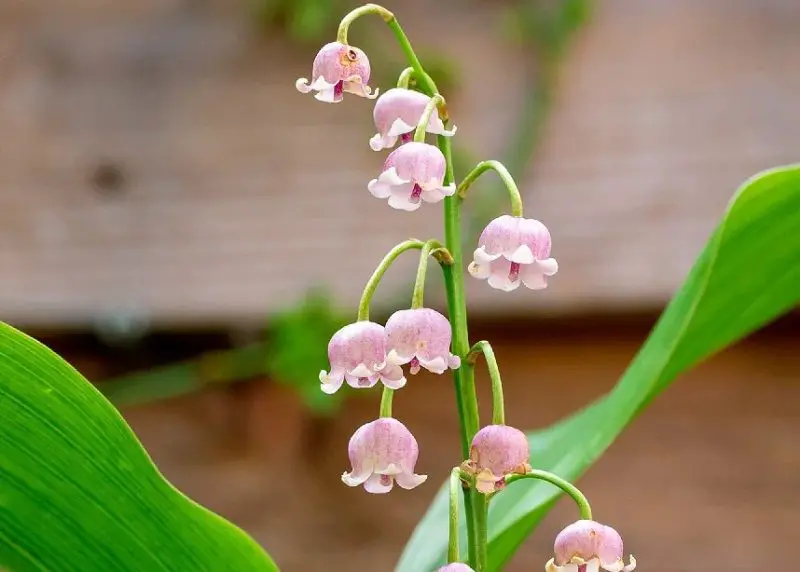
Lily of the Valley (Convallaria majalis) is a charming spring-blooming plant that belongs to the asparagus family, not a true lily. It features medium green leaves resembling those of lilies and produces petite, delicate, fragrant bell-shaped white blooms in spring, followed by orange-red berries in the fall.
This shade-loving groundcover is known for its ability to gradually form dense colonies, which can make it invasive in many areas of the Midwest and Northeast. If you choose to plant Lily of the Valley, it’s essential to manage its spread. It thrives in USDA Hardiness Zones 5-9, prefers partial shade, and requires well-drained soil, but it is toxic to humans and pets.
Butterfly Bush
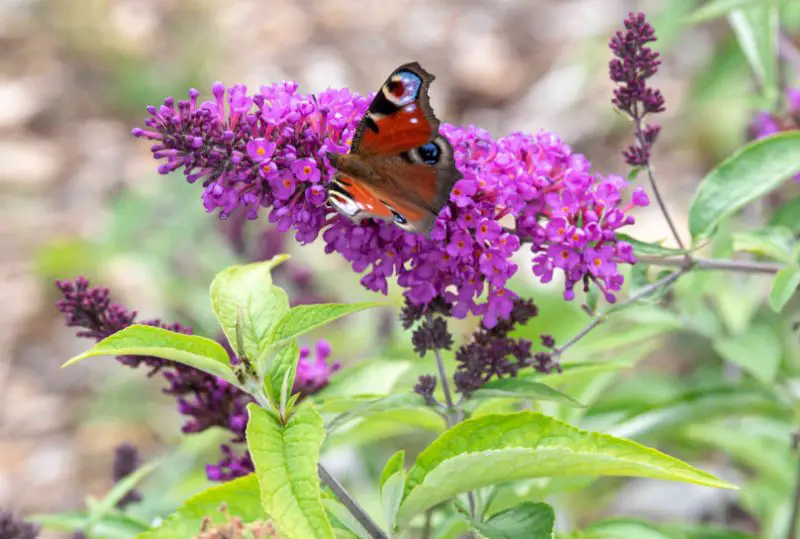
Butterfly Bush (Buddleia davidii) is a deciduous woody shrub that blooms from summer to early fall, showcasing impressive floral spikes or clusters in a variety of colors. These vibrant blooms attract pollinators while deterring deer, making it a popular choice for gardens.
Some butterfly bush varieties can grow up to 12 feet tall, while others remain more compact. However, it self-seeds readily and is considered invasive in many regions. If you decide to grow Butterfly Bush, it’s advisable to choose sterile or seedless varieties, such as ‘Blue Chip.’ It thrives in USDA Hardiness Zones 5-9, prefers full sun, and requires moist but well-drained soil.
Marigold
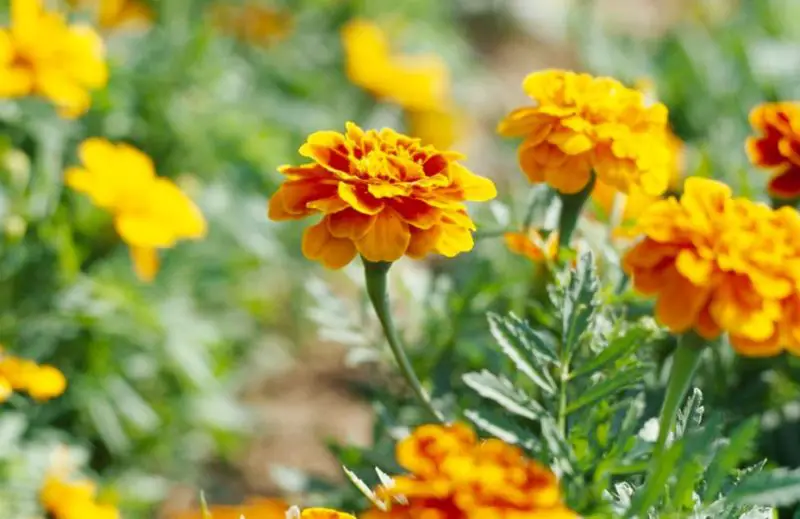
Marigold (Tagetes spp.) is a vibrant annual known for its rich colors, blooming reliably in shades of yellow, gold, and copper, complemented by fern-like, serrated foliage. These fast-growing plants can produce blooms within a few months of being planted from seed, making them a popular choice for gardeners.
Marigolds bloom from early summer to late fall, and their distinct fragrance helps deter deer and rabbits from munching on them. They thrive in USDA Hardiness Zones 2-11, prefer full sun, and require moist but well-drained soil. Marigolds are available in a variety of colors, including yellow, orange, white, red, gold, and bicolor.
Forsythia
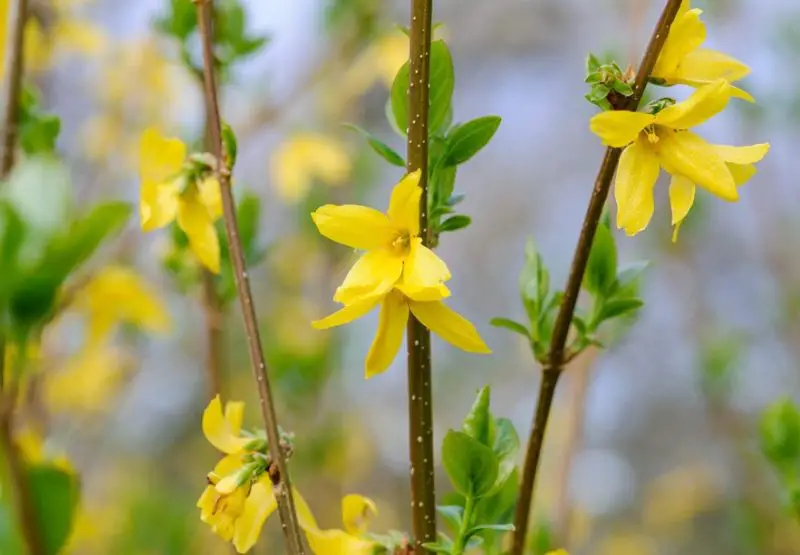
Forsythia (Forsythia spp.) is a fast-growing deciduous flowering shrub known for its vibrant yellow blooms that appear in early spring, often before the leaves emerge. This unique characteristic allows an unobstructed view of the flowers, creating a stunning display.
Compact varieties of forsythia typically grow a few feet tall, while larger types can reach heights of up to ten feet. Deer rarely graze on these shrubs, although any non-toxic plant may be at risk if deer are particularly hungry.
Forsythias thrive in USDA Hardiness Zones 5-8 and prefer full sun to partial shade, requiring moist but well-drained soil for optimal growth.
Rose of Sharon
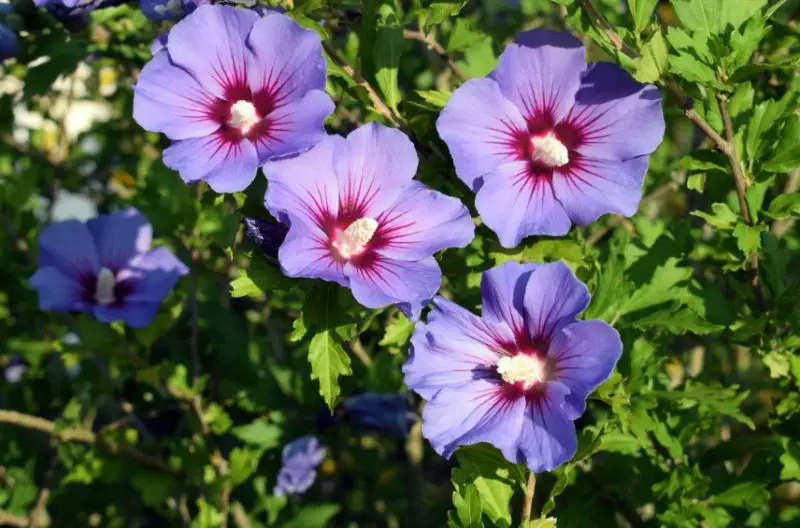
Rose of Sharon (Hibiscus syriacus) is a deciduous and hardy hibiscus species that produces striking blooms with prominent stamens and often features a contrasting dark-colored throat. This shrub can be planted in spring or fall and grows about one to two feet each year.
It begins flowering in late spring or early summer and continues to produce blossoms into the fall. Rose of Sharon is resilient, tolerating urban conditions, heat, humidity, poor soil, and drought; however, it is considered invasive in several states.
It thrives in USDA Hardiness Zones 5-8 and prefers full sun to partial shade, requiring moist but well-drained soil for optimal growth. The flowers are available in a variety of colors, including pink, purple, lavender, red, peach, orange, bluish-lavender, and white.
Floss Flower
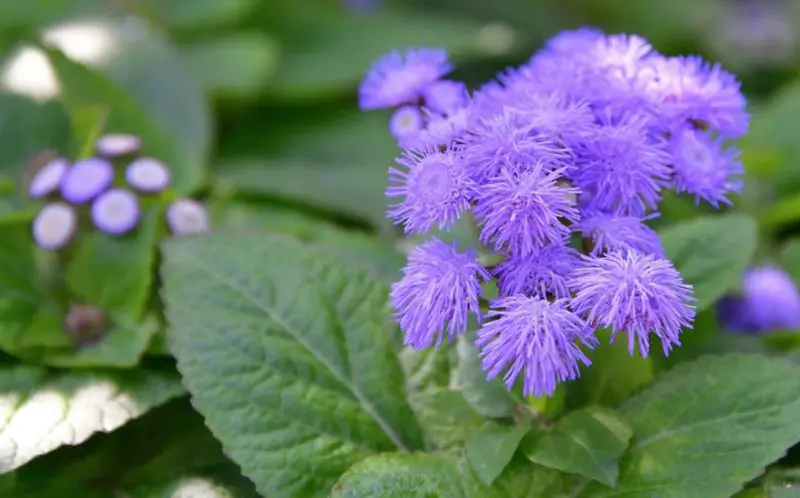
Floss Flower (Ageratum spp.) is an annual plant that blooms from late spring through the first frost of fall, with some varieties reaching heights of up to 30 inches. While it comes in several colors, it is most prized for its vibrant periwinkle blue blooms.
Floss flowers thrive in sunny locations with moist, well-draining soil, and although they can tolerate periods of dryness, they perform best with regular watering. The rough-textured foliage of floss flowers helps deter deer, making them a great choice for gardens.
They are suitable for USDA Hardiness Zones 2-11 and can grow in full sun to partial shade. Flower colors include purplish blue, periwinkle blue, pink, and white.
Verbena
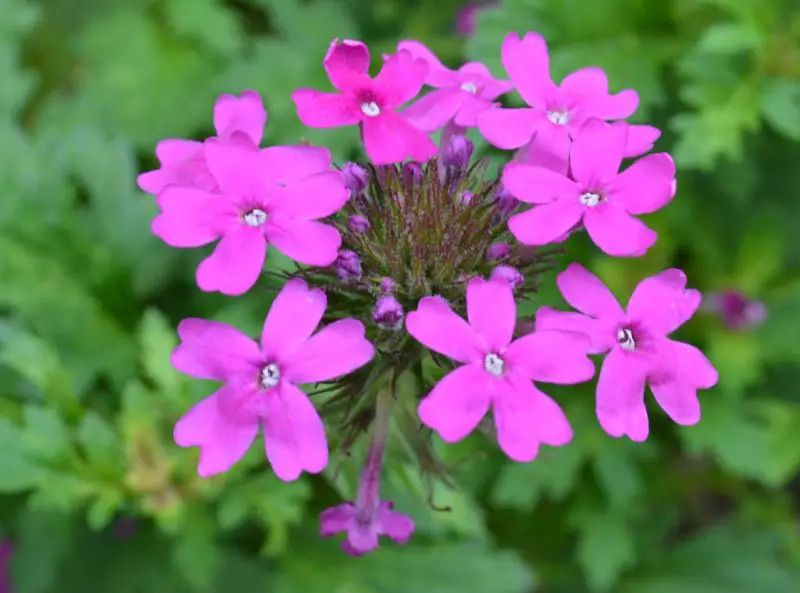
Verbena (Verbena x hybrida) is a vibrant flowering plant often cultivated as an annual hybrid for flower beds or as a hardy perennial in USDA Hardiness Zones 8 to 11. With clusters of colorful flowers blooming from spring to fall, verbena attracts a variety of pollinators, including bees, hummingbirds, and butterflies.
To promote continuous blooming throughout the season, regular deadheading is recommended. These plants thrive in full sun and require well-drained soil, producing flowers in an array of colors, including white, red, purple, pink, lavender, and peach, either solid or bicolored.
Snapdragon
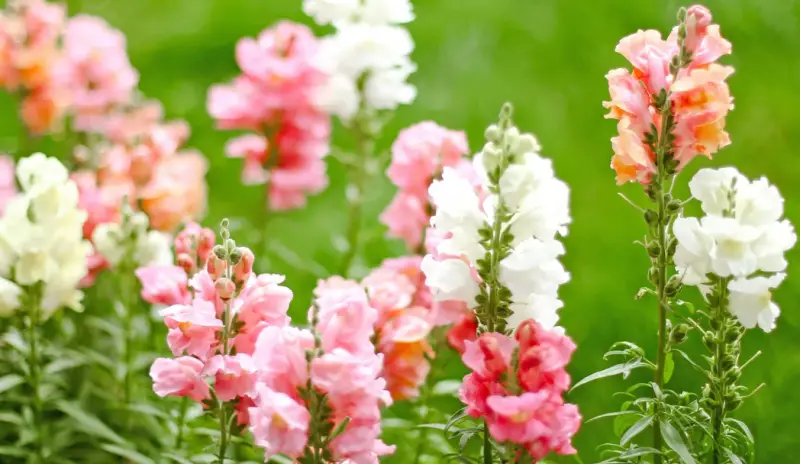
Snapdragon (Antirrhinum majus) is a short-lived perennial that thrives in USDA Hardiness Zones 7 through 11 but is often grown as a cool-weather annual in other regions. These plants come in various sizes, ranging from a few inches tall to impressive spires nearing four feet.
Snapdragons flourish in cooler weather during spring and fall, with flower production slowing as temperatures rise. They prefer full sun to partial shade and require moist but well-drained soil. The vibrant flowers bloom in an array of colors, including white, yellow, pink, red, orange, peach, purple, and violet.
Bee Balm
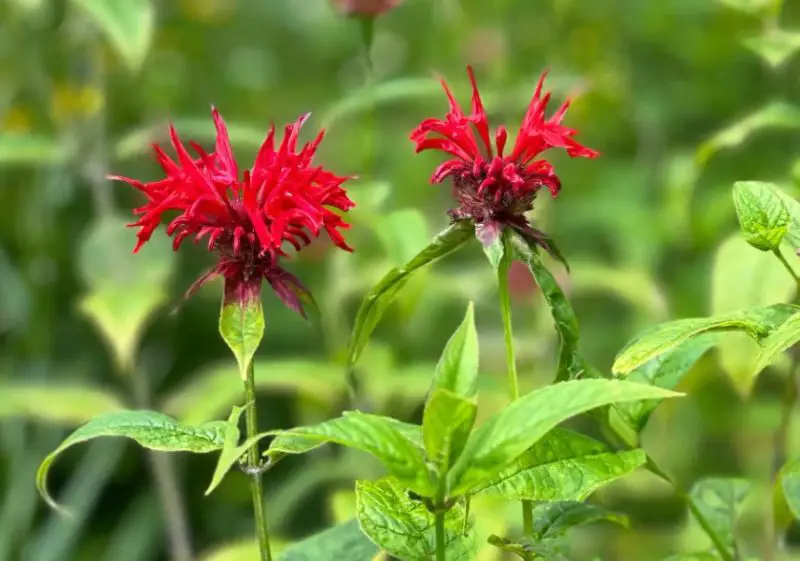
Bee Balm (Monarda spp.) is a vibrant North American wildflower from the mint family, characterized by its bright, colorful flower heads atop thin stems. These plants can grow up to four feet tall and have downy oval leaves on their undersides.
Bee balm features a long bloom season in summer and tends to spread aggressively via underground rhizomes and self-seeding. The flowers, which resemble colorful, hairy clusters, attract various pollinators, including bees, butterflies, and hummingbirds.
They thrive in USDA Hardiness Zones 3-9, prefer full sun to partial shade, and flourish in moist soil. The flower colors include red, purple, pink, white, and lavender.
Monkshood
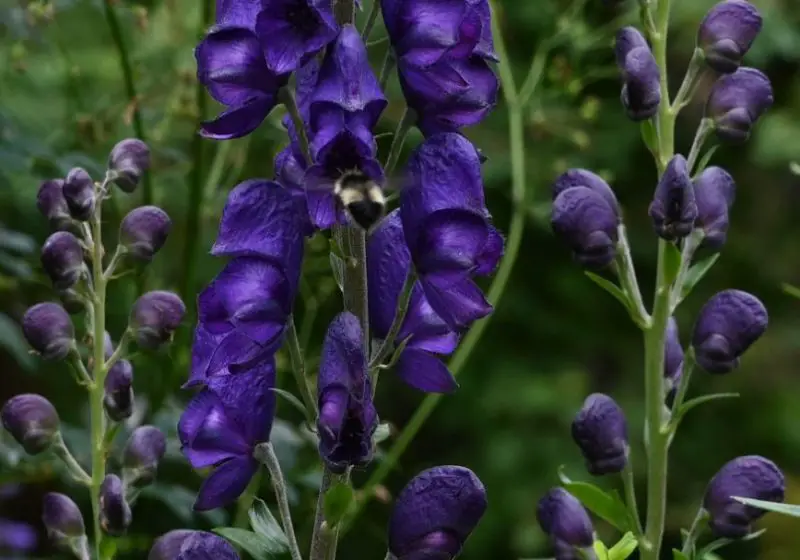
Monkshood (Aconitum spp.) is a tall herbaceous perennial native to Europe and Asia, known for its stunning blooms in late summer and fall. This plant thrives in partial shade and is a slow grower, named for its resemblance to the cowl of a monk’s habit. It produces racemes of flowers in various colors, including azure blue, pink, yellow, or white, atop sturdy, unbranched stems.
Monkshood requires plenty of water to thrive and is one of the most dangerously toxic plants, making it essential for gardeners to wear gloves when handling it. It is suitable for USDA Hardiness Zones 3-8 and prefers full sun to partial shade. The soil should be moist but well-drained.
Bearded Iris
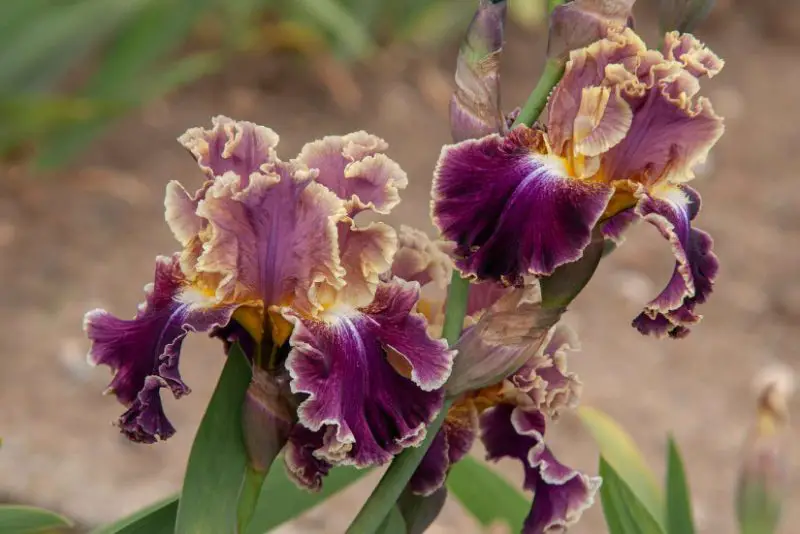
Bearded Iris (Iris x germanica) is one of the most popular and easiest-to-grow varieties of iris, known for its striking sword-like leaves and beautiful flowers that feature spreading or drooping lobes. This perennial typically blooms in the spring and often flowers in its first year if given the right conditions.
Bearded irises thrive in well-draining soil and require a sunny spot, as their rhizomes must be partially exposed to sunlight to produce flowers. The plant’s fragrant blooms and sharp, thick foliage are believed to deter deer.
Suitable for USDA Hardiness Zones 3-9, bearded irises prefer full sun and well-drained soil. They come in a wide range of colors, including red, orange, yellow, blue, purple, brown, white, pink, magenta, and even black, often featuring bicolored varieties. However, they are toxic to humans and pets.
Peony
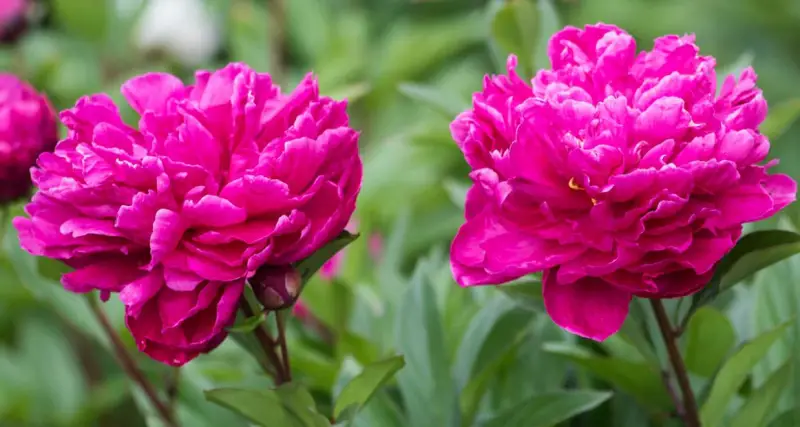
Peony (Paeonia officinalis) is one of the longest-lived garden plants, often cherished and passed down through generations of gardeners. These spring-blooming beauties feature a variety of blooms, including fluffy, full, ruffled, and single forms.
Due to their top-heavy flowers, peonies often require staking and protection from wind to prevent them from flopping and bending. Their strong, delightful fragrance is a natural deterrent for deer.
Peonies thrive in USDA Hardiness Zones 3-9, preferring full sun and well-drained soil. They come in a wide array of colors, including white, pink, rose, red, deep purple, and coral. However, they are toxic to pets.
Sunflower
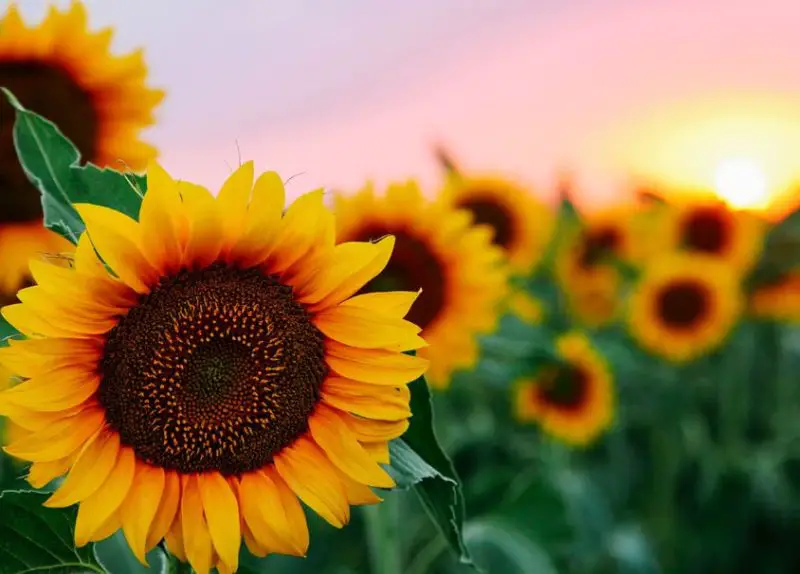
Sunflower (Helianthus annuus), particularly the ‘Helios Flame’ variety, features striking blooms with radiating yellow and red petals that flourish in sunlight. These annuals boast sturdy, hairy stems that can grow several feet tall, depending on the specific variety.
Sunflowers typically bloom from midsummer to early fall, showcasing large flowers that can measure six inches or more in diameter. Their prominent central disk produces hundreds of seeds that are favored by birds.
Interestingly, deer tend to avoid the plant due to its rough leaves. Sunflowers thrive in USDA Hardiness Zones 2-11, prefer full sun, and require well-drained soil. They are available in a range of colors, including yellow, gold, orange, cream, maroon, and mahogany, in both solid and bicolor varieties.
Foxglove

Foxglove (Digitalis purpurea) is a striking flowering plant known for its tall stature and eye-catching, tubular blooms that come in shades of pink, white, or purple, typically blooming in early summer.
These fast-growing biennials can reach heights of up to five feet, producing lush foliage in their first year and impressive flower stalks in their second before completing their life cycle. Foxgloves are self-seeding, allowing them to proliferate year after year.
Interestingly, deer generally avoid these plants due to their toxicity. They thrive in USDA Hardiness Zones 4-10, prefer full sun or partial shade, and require loamy, well-drained soil. Foxgloves come in various colors, including pink, purple, red, white, cream, yellow, salmon, and peach, but they are toxic to humans and pets.
Heliotrope
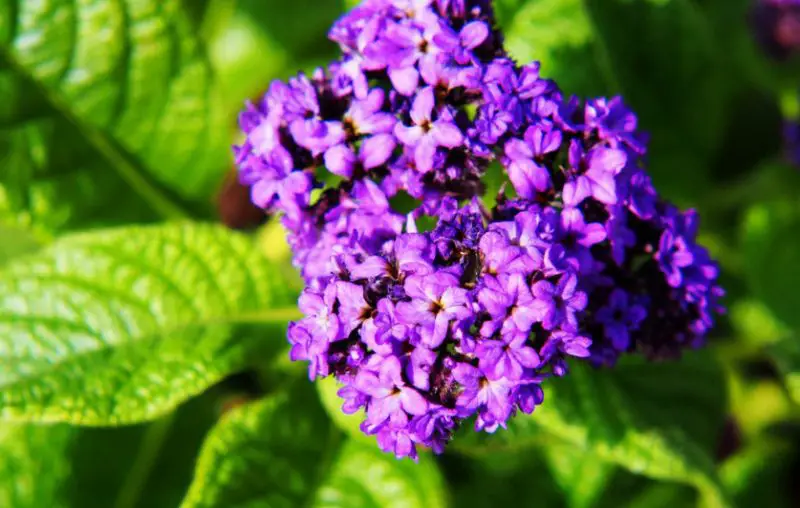
Heliotrope (Heliotropium spp.) is a captivating genus of flowering plants in the Boraginaceae family, celebrated for their stunning, fragrant blooms. These sun-loving plants are known for their unique ability to turn their heads to follow the sun throughout the day.
Deer tend to avoid heliotropes due to their scent and the rough, sandpaper-textured leaves. In warmer climates, they are perennial, but in cooler zones, they are frost-tender and typically grown as annuals. Regular deadheading encourages more blooms and promotes bushy, dense growth.
Heliotropes thrive in USDA Hardiness Zones 9-11, require full sun, and prefer well-drained soil. Their flowers can come in shades of white, lavender, and purple, but they are toxic to humans.
Zinnia
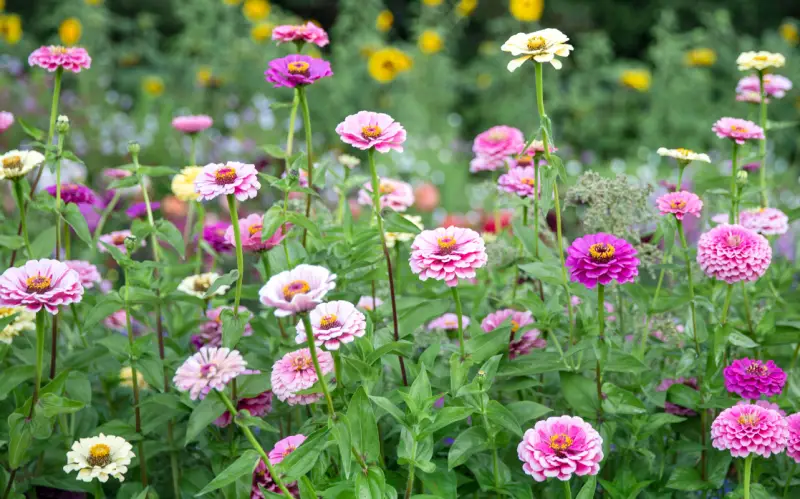
Zinnia (Zinnia elegans) is a vibrant and versatile flowering plant that thrives as a perennial in warm climates but is often grown as a deer-resistant annual in cooler areas. These plants require minimal care, although proper spacing is essential to prevent powdery mildew, which can occur without adequate air circulation.
Zinnias produce brightly colored, flat flower heads that bloom from summer through fall. Regular deadheading of spent flowers encourages continuous blooming. Available in both compact and tall varieties, zinnias can grow up to four feet high. Their rough-textured leaves typically deter deer from grazing on them.
Zinnias thrive in USDA Hardiness Zones 3-10, prefer full sun, and require well-drained soil. They come in nearly all colors except black, available in both solid and bicolored forms.
Lilac
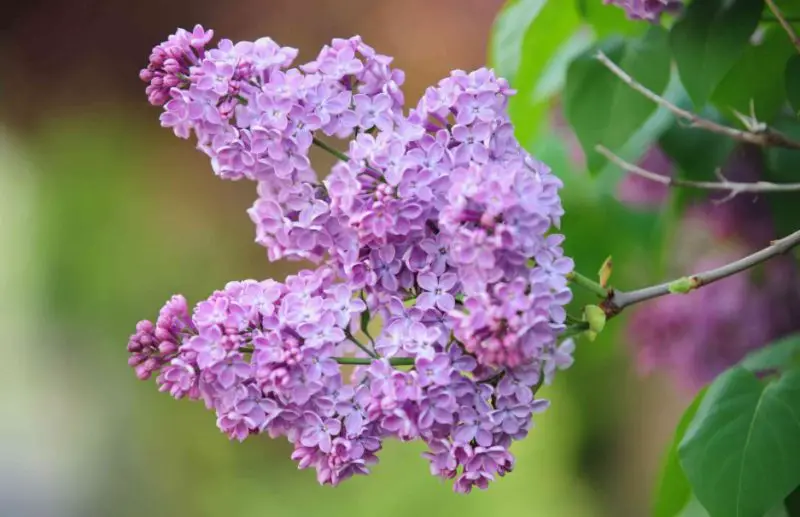
Common lilac (Syringa vulgaris) is a low-maintenance landscape shrub renowned for its heavily fragranced and abundant flower heads that bloom in spring. While deer generally avoid this plant, young lilac shrubs can be vulnerable shortly after planting.
However, if the root system remains intact, the plant can survive and regrow even after being browsed. Common lilacs thrive in USDA Hardiness Zones 3-7, requiring full sun and moist but well-drained soil for optimal growth.
Their flowers are available in a range of beautiful colors, including lavender, purple, white, pink, and magenta, making them a popular choice for gardens and landscapes.






